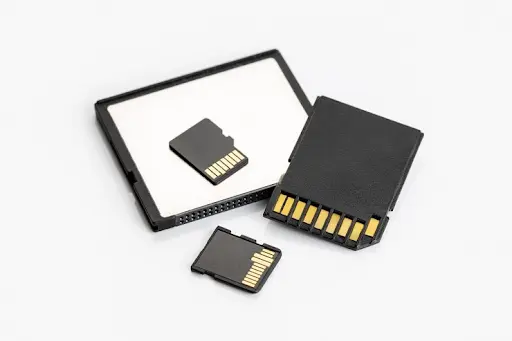Memory cards are the most miniaturized storage media. They are used in many electronic gadgets, from smartphones to cameras. The user faces a logical question: Should he take an expensive card or choose a cheaper model? How do they differ from each other? This article will explain how to avoid confusion about the characteristics of a flash memory card.
Despite their small size, flash cards have many characteristics affecting cost, comfort, and durability. Among them are standard, capacity, read and write speeds, speed classes, and number of rewrite cycles.
Of the dozens of memory card standards available just a few years ago, only a few remain on the market today. Most modern devices use Secure Digital (SD) cards, among which are full-size SD and miniature microSD. The latter can be used in place of full-size with the help of an adapter. The middle “sister” miniSD has almost disappeared. In addition to SD cards, the user devices only had various Compact Flash cards and XQD.
SD and microSD cards are the most popular and widespread on the market. How can you avoid making a mistake when choosing them? What can you save money on, and what should you overpay for?
Volume
The most apparent characteristic of the user. In today’s market, memory cards with a maximum capacity of a couple of gigabytes have become irrelevant and disappeared. Current models have a capacity of 4 GB to 1 TB of data, allowing you to choose the volume for any need.
Bus Standards
SD cards can connect to your device using several bus standards. While the bus itself doesn’t determine the speed of the card’s internal memory, it does determine the speed of the channel the device uses to access the card. Additionally, different bus protocols have different operating voltages. A card with a more advanced bus and low-voltage support will drain your device’s battery-less in standby mode.
Speed Class
One of the most confusing characteristics for the user is that this parameter does not reflect the apparent speed—it only indicates what speed will not fall below linear writing to the card. The number after the class indicates the speed in MB/s.
Speed classes are designated by the letters C, U, V, and A.
In addition to the linear speeds, Class A cards must meet the minimum speeds of input and output read/write operations since they are supposed to be used for installing Android applications.
Cards of a particular class regarding actual write speed can meet and exceed the minimum allowable speed. The same is true for read speed – classes do not regulate it. And most often, it is much higher than the class speed. That’s why choosing a card solely by class makes no sense. First of all, you should pay attention to the declared read and write speeds.
Read And Write Speeds
Despite the bus and speed class, two memory cards with the same characteristics can differ significantly in terms of the speed of actual work. That’s why most manufacturers specify read and write speeds, although these values are not present on all products packaging.
Faster cards are more expensive, but transferring information from or to them takes much less time. As a rule, in each line of cards from the same manufacturer – the larger the volume, the higher the write speed. This is due to the greater parallelism of internal flash memory. All other things being equal, larger capacity cards are faster.

